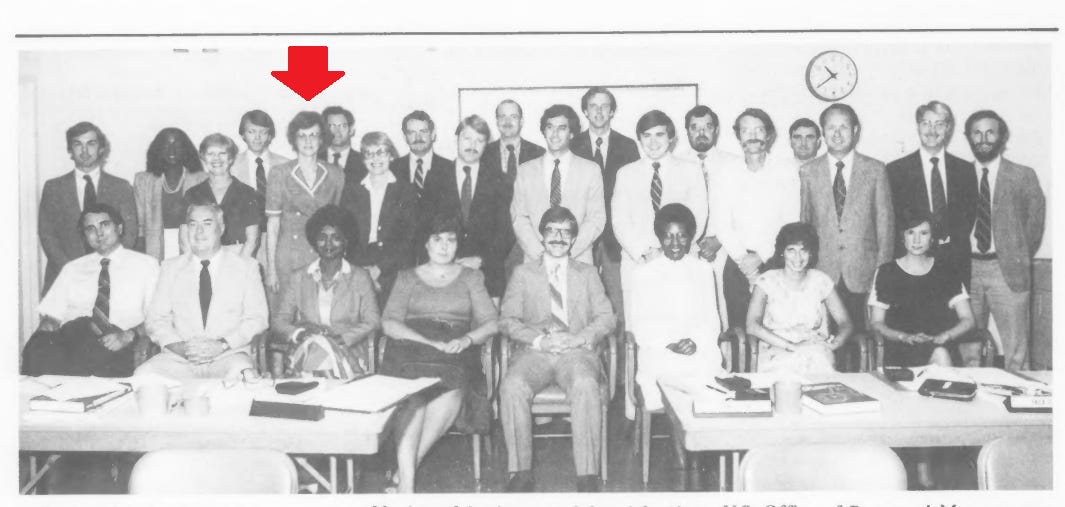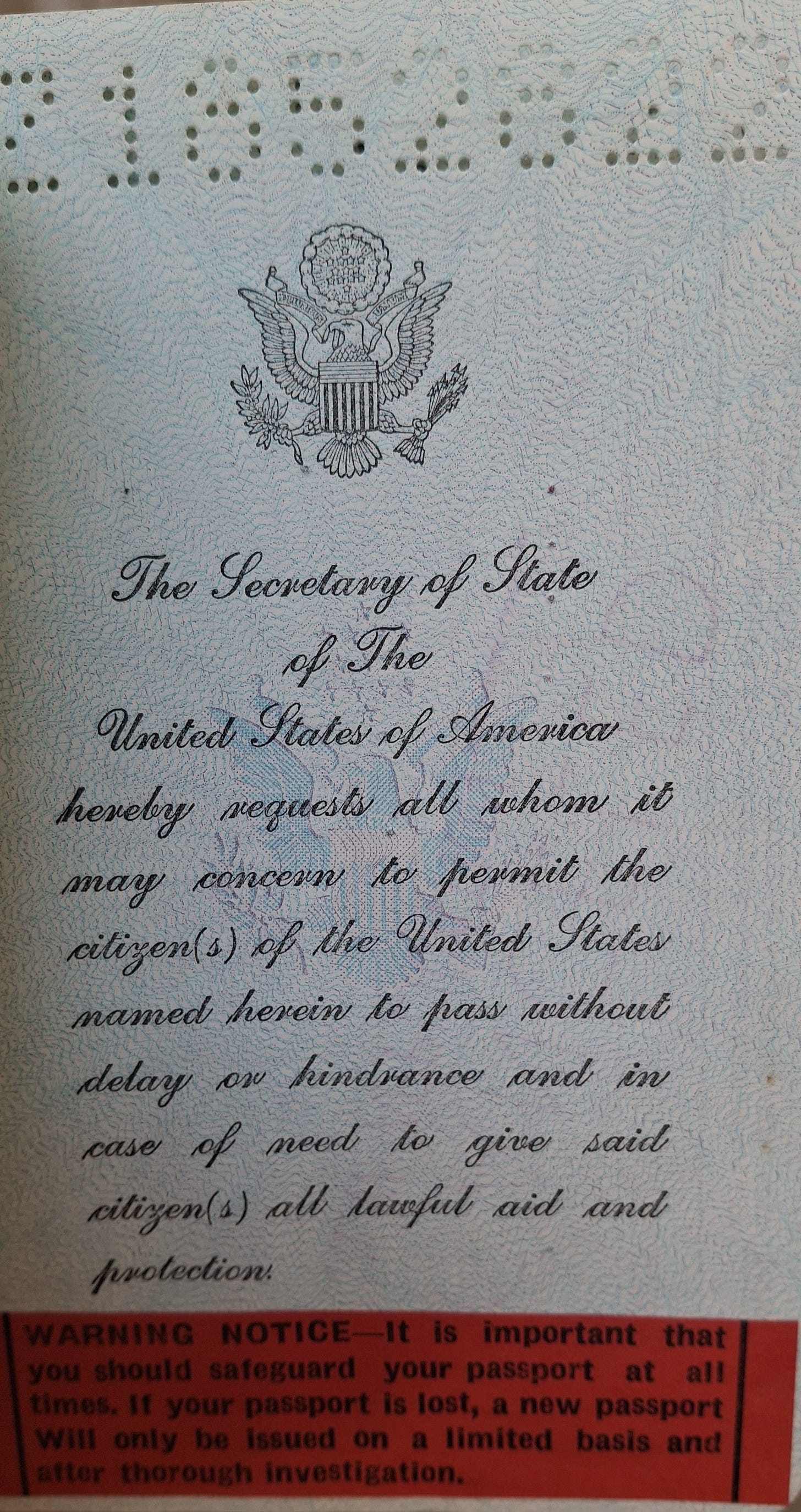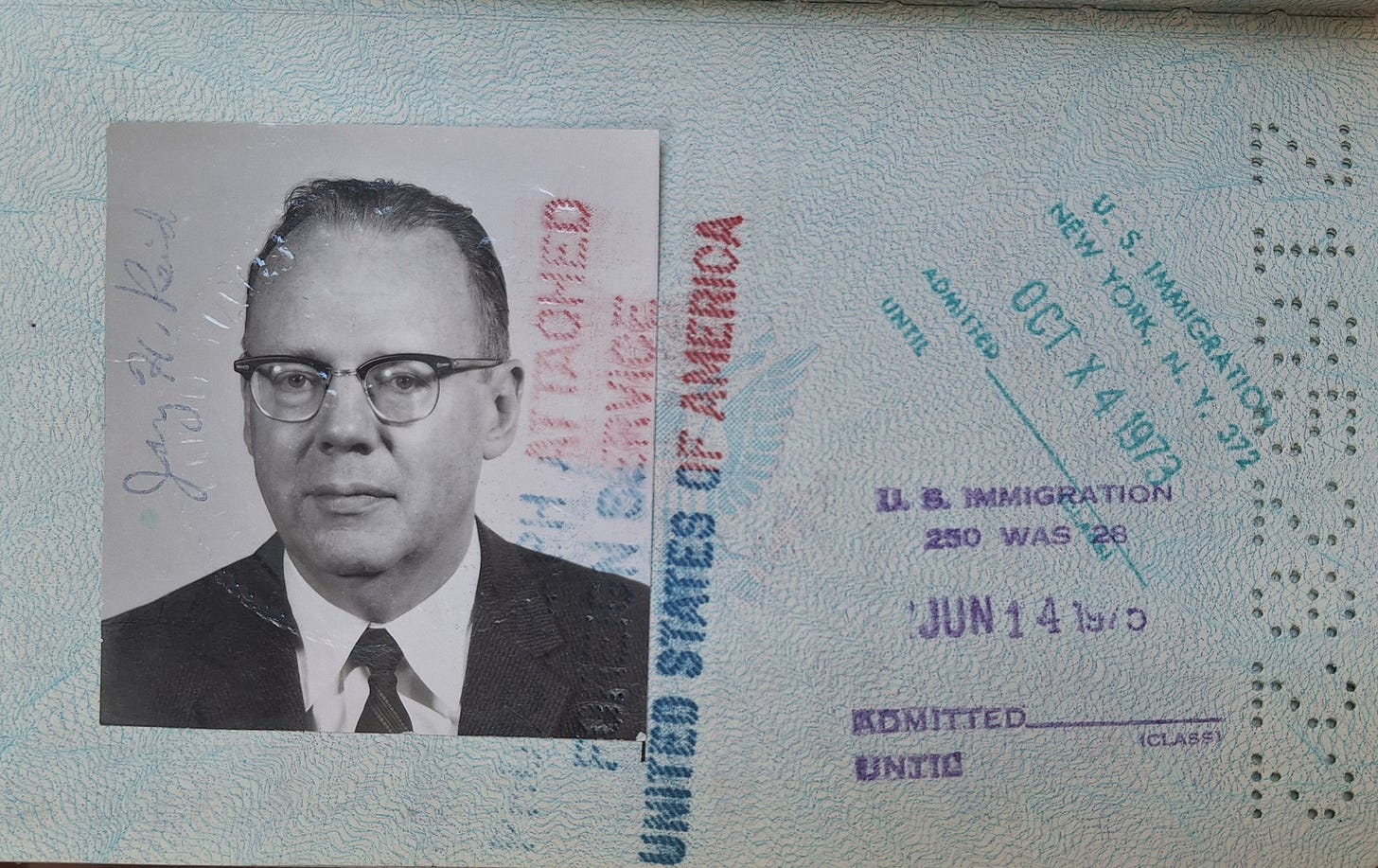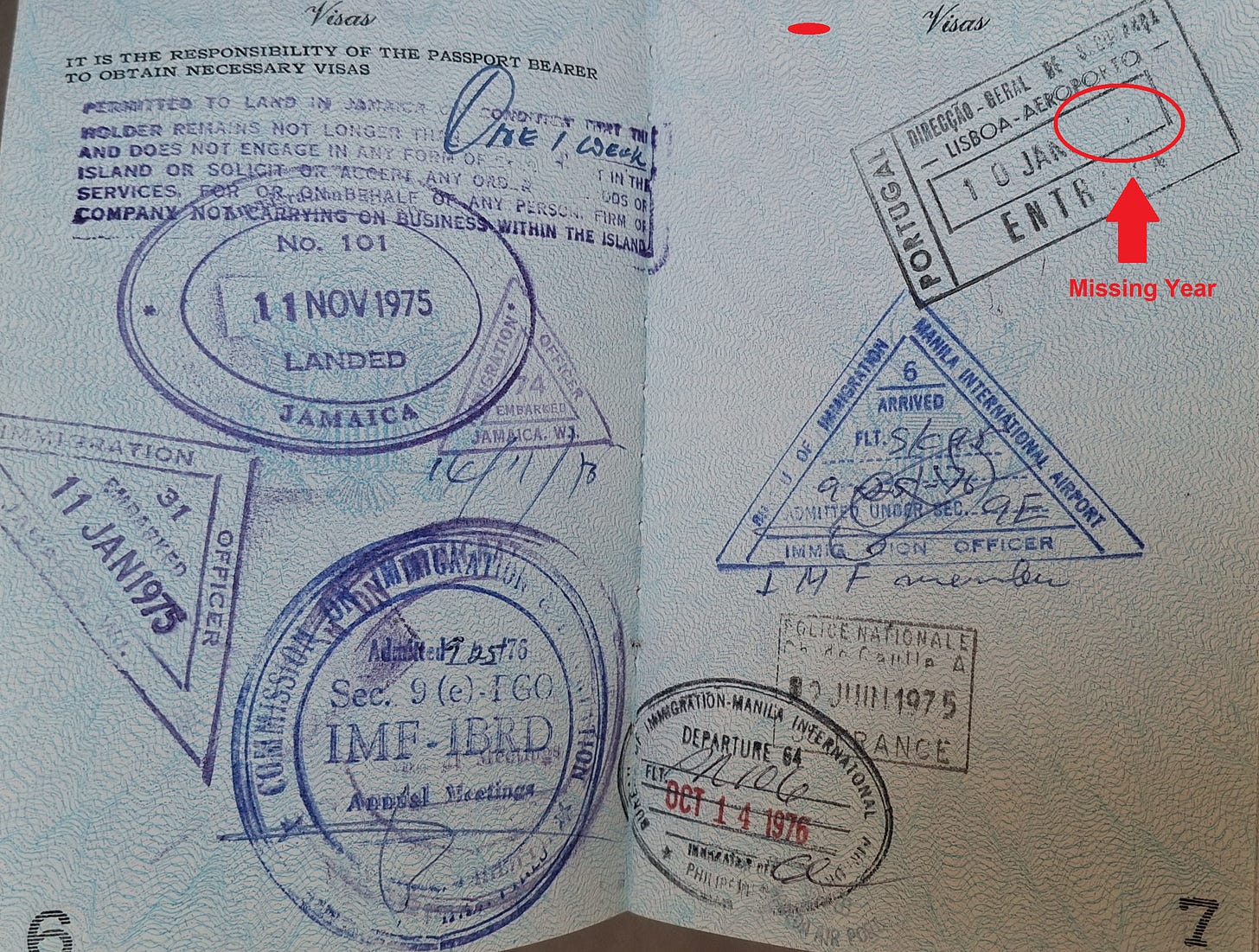Jay Reid Travelled on Cancelled Passport for Three Years
The second Roadmap document poses more questions than it answers

An old passport issued to Jay Reid in the 1970s poses numerous questions about his comings and goings as the International Monetary Fund’s Director of Information.
Gwendolyn Coronway, Vice Consul, signed the passport issued to Jay Herbert Reid on September 26, 1973 at the U.S. Embassy in Nairobi, Kenya. To date, it is the only passport of Jay’s that I have located.

The passport is a standard tourist version, and the color (green) was standard for all U.S. passports in 1973.
It is important to note that although IMF officials do not receive diplomatic passports, they do enjoy unique legal immunities1:
Perhaps another reason for the adoption of rather comprehensive codes of staff conduct by international organizations stems from the fact that these organizations and their officials enjoy certain privileges and immunities under their governing charters. At the IMF, these privileges and immunities are provided in the Articles of Agreement. In particular, officials are immune from judicial process with respect to acts performed in their official capacities. Although officials do not have immunity with respect to their personal conduct outside the workplace, the immunity of the organization may have the unintended effect of insulating that conduct from the reach of the legal system. For example, if a staff member fails to pay a legal judgment for alimony or child support; the court may then order the IMF as the employer to pay over a prescribed amount of the wages to the employee’s spouse or other creditor (which the court could do from other employers in the US). However, the IMF– unlike other employers-- is immune from the garnishment order, as it is immune from any form of judicial process. The result is that the staff member may appear to have evaded his private legal obligations by “hiding behind” the IMF’s immunity. In order to prevent this result –which would undoubtedly lead to complaints that immunity was being abused—the IMF has a standard of conduct stating that the failure to meet private legal obligations may be grounds for disciplinary action. Moreover, it will voluntarily give effect to certain types of garnishment orders (in the family law context), notwithstanding its immunity.
A source with knowledge of Jay’s travel schedule in the 1980s said that Jay did not travel abroad after retiring from the IMF in the summer of 1980.
This same source added that Jay’s wife, my grandmother Virginia, never joined Jay on any of his IMF-related trips. As such, she looked forward to his retirement as her chance to finally see the world.
It was not to be.
Inconsistencies
Because the passport was issued in Nairobi, we know that Jay entered Kenya on another passport. What we do not know is why he did not leave on that same passport.
It is possible he misplaced the first passport, or perhaps it was stolen.
Theoretically, it is also possible that the first passport expired while he was in Kenya. However, it is highly unlikely that he would have been allowed to enter the country on a passport so close to its expiration date.
There is one other possibility. Jay may have simply acquired another passport, claiming the first was lost or stolen.
A notable feature of this passport is that it was supposedly cancelled.
If you just glance at the page, it appears to say “CANCELLED NEW APPLICATION”, but the hard copy clearly says “NLW”, not “NEW”. At present, I do not know what NLW means.

The date entered by the CANCELLED stamp appears to be 8/15/75, and the word “fee” implies that Jay paid the fee for a new passport on that date.
It would make more sense if the year were 1978. However, the final digit looks much more like the “5” in the day section than the “8” in the month section. The last digit could also be a “9”, but the passport had already expired in1979, so there would have been no reason to cancel it.
Page 3, in addition to containing a photograph of Jay when he was around 58 years old, includes a stamp showing that he returned to the United States on October 4, 1973, eight days after the passport was issued.
The June 14, 1975 admittance stamp is the final one before the cancellation date, but there were many stamps with later dates.
Entries and exits
The pattern of entry and exit stamps in the back of the passport is curious.
Here are the trips I have deciphered:
Kenya to Portugal to the United States
Arrive in Lisbon, Portugal on September 30, 1973
Arrive in New York on October 4, 1973
France to the United States
Arrive in Paris, France on June 12, 1975
Arrive in Washington D.C. on June 14, 1975
Manila, Philippines
Arrive in Manila on September 25, 1976
Depart Manila on October 14, 1976
France
Arrive in France on August 3, 1977
Depart France on August 8, 1977
Mexico
Arrive in Mexico on April 24, 1978
Depart Mexico on May 31, 1978
What to make of Jamaica
Jay has four stamps in his passport from Jamaica. They do not yet make sense to me:
Exit November 14, 1973
Exit January 11, 1975
Enter November 11, 1975
Enter January 3, 1976
The missing Portuguese date
This passport includes two entrance stamps into Portugal. The first was a stop-over on the return trip from Kenya to the United States in 1973. The second was on January 10, but the year is missing.
If Portugal was the final destination in January, then the trip was likely connected to the stabilization program agreed with that country’s government in May 1978.
Missing American entry stamps
Finally, there is a strange lack of American entry stamps in Jay’s passport. My understanding is that the U.S. stamped passports upon entry into the country up until 2021.
Jay had U.S. entry stamps in 1973 and 1975, but only following trips originating in Europe. And only before the passport was cancelled.
Although the Mexico trip could have theoretically not involved air travel, Jay almost certainly flew to and from the Philippines. The same is true for Jamaica. Why he would not have received a stamp in the airport upon returning home is unclear.
Takeaways
So many aspects of Jay’s passport do not make sense.
Why did he get the passport in Kenya, a country he would have visited for work, but never resided in?
Why was the passport cancelled in 1975, but still used for international travel up to its original expiration date in 1978?
Why are multiple entry/exit stamps missing?
In the end, this passport confirms Jay’s legal name, albeit without the suffix. It also confirms that he travelled on behalf of the IMF.
The rest, well, we can roll that up into one big mystery.
Powers, Joan S. OVERVIEW OF THE RULES ON CONDUCT AND ETHICS AT THE IMF. Accessed September 3, 2024.






